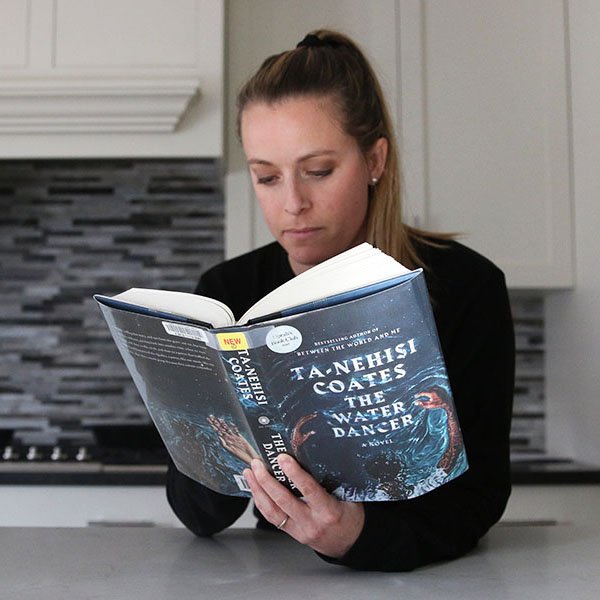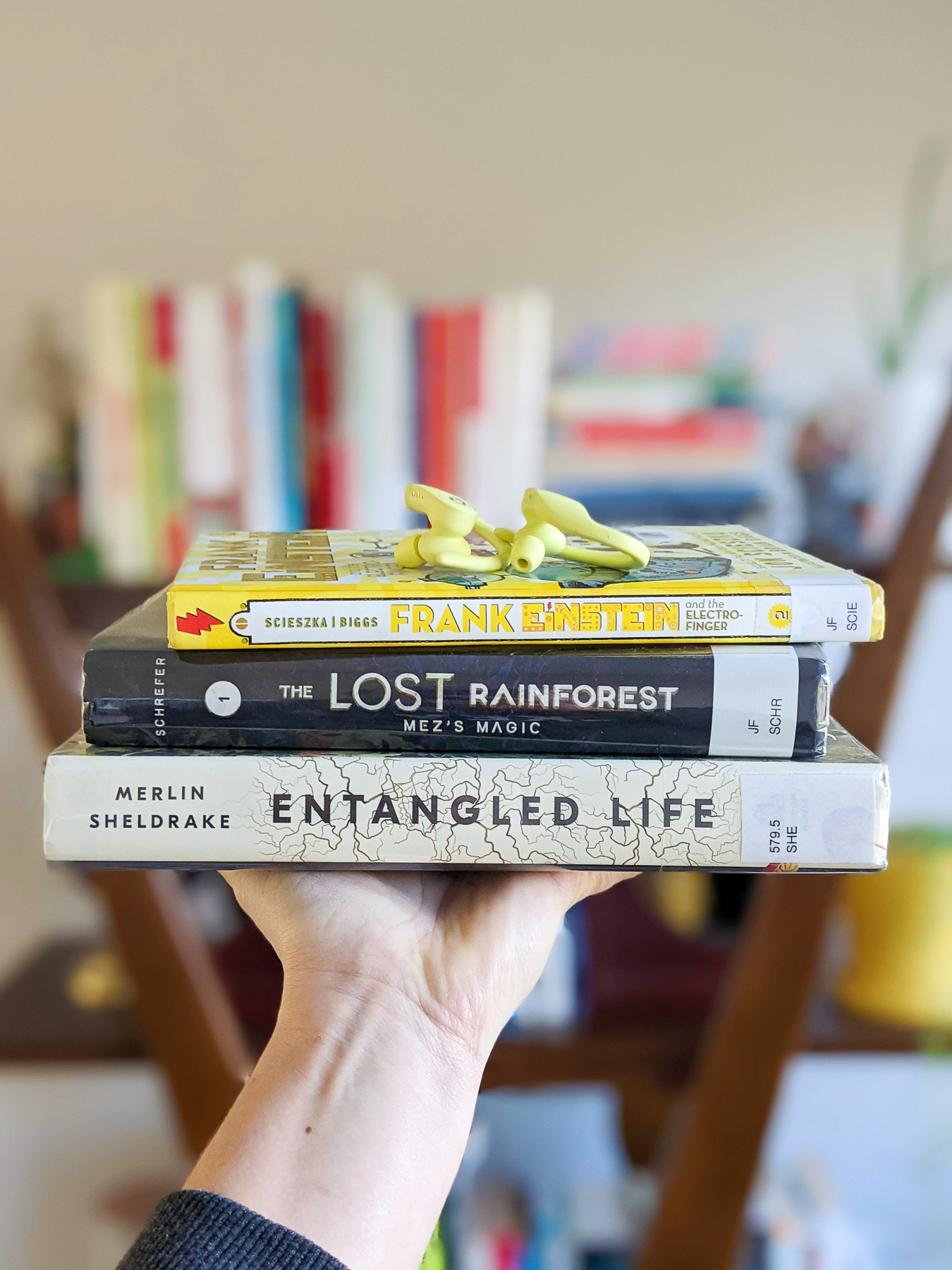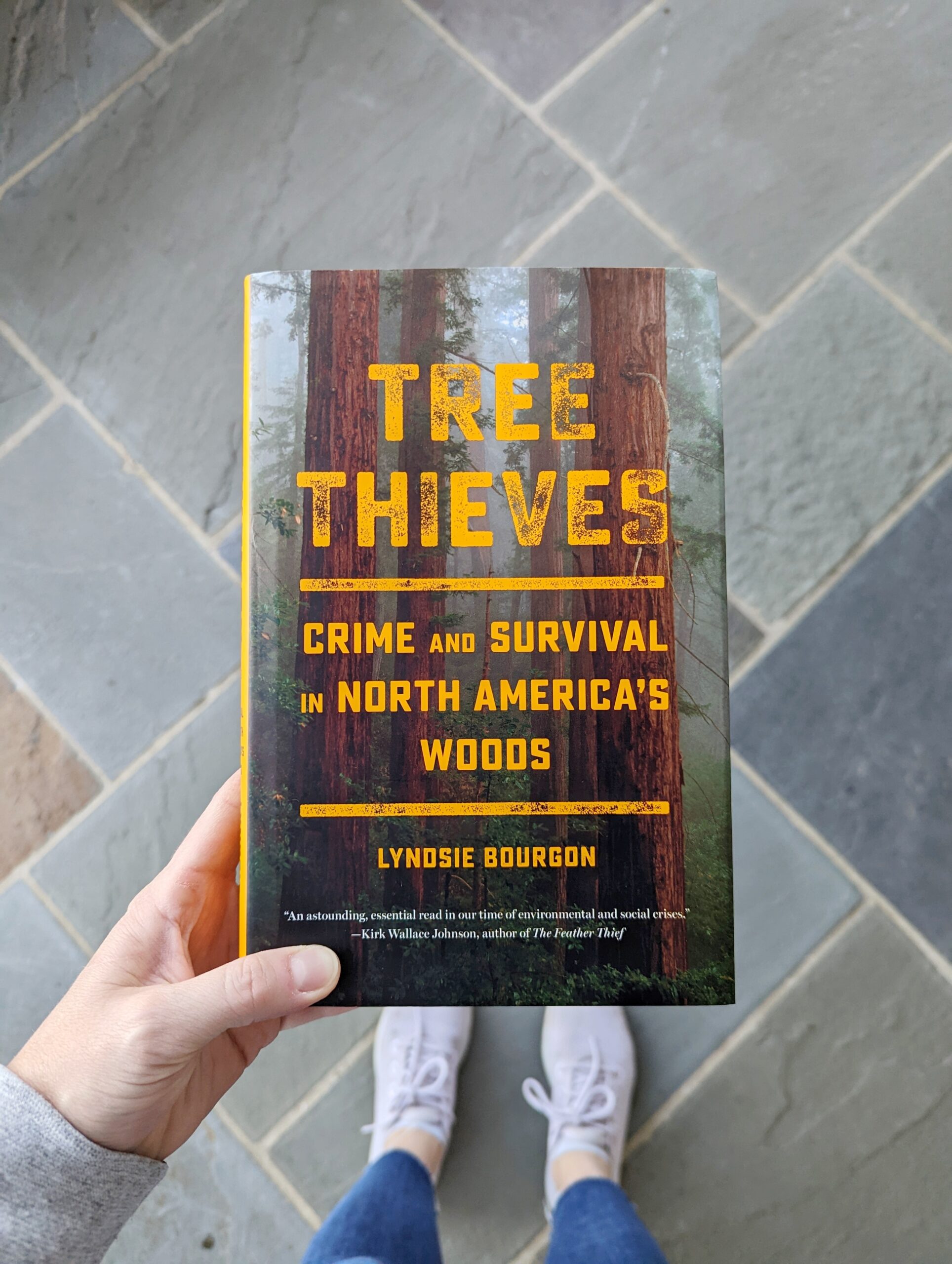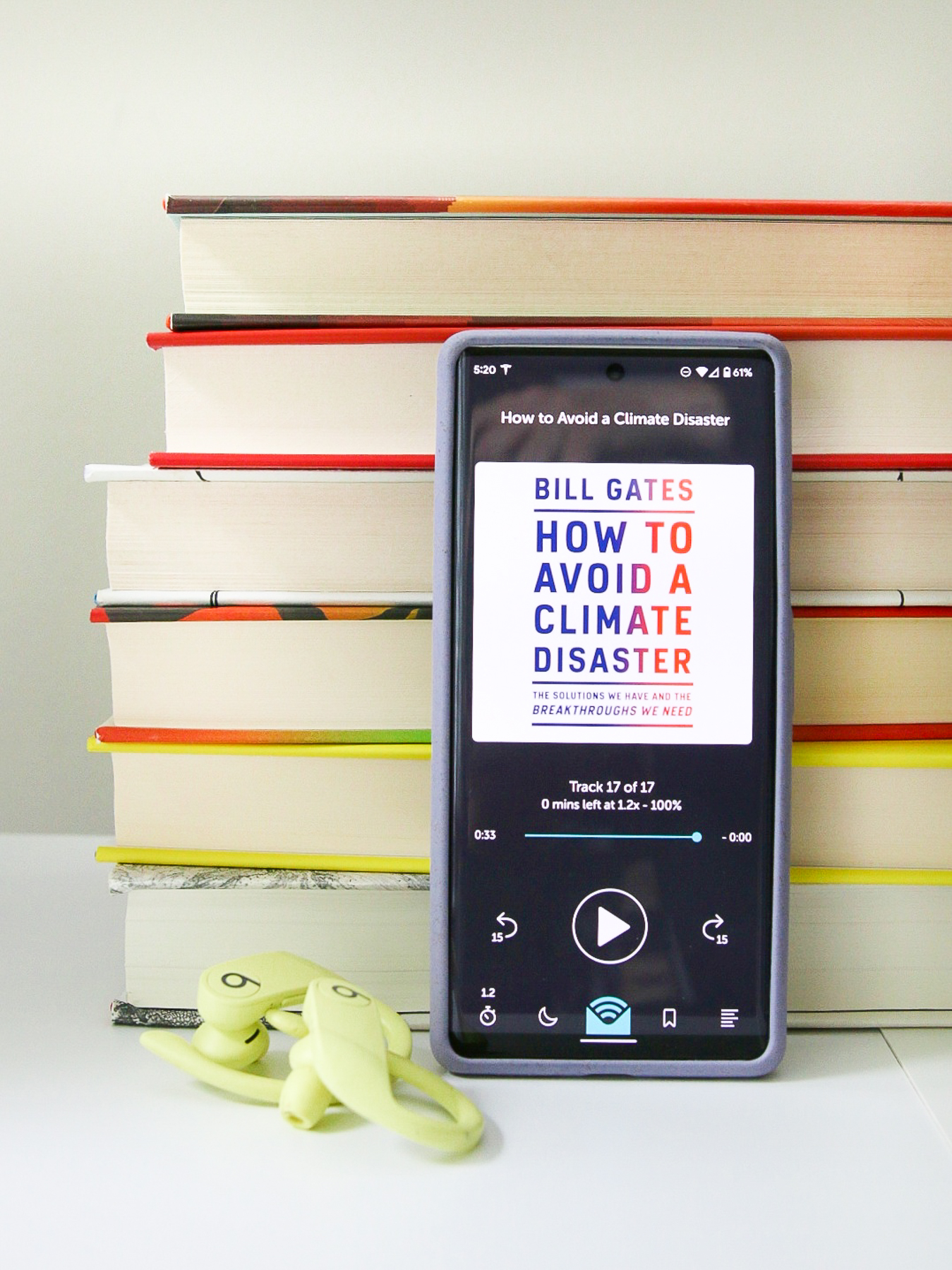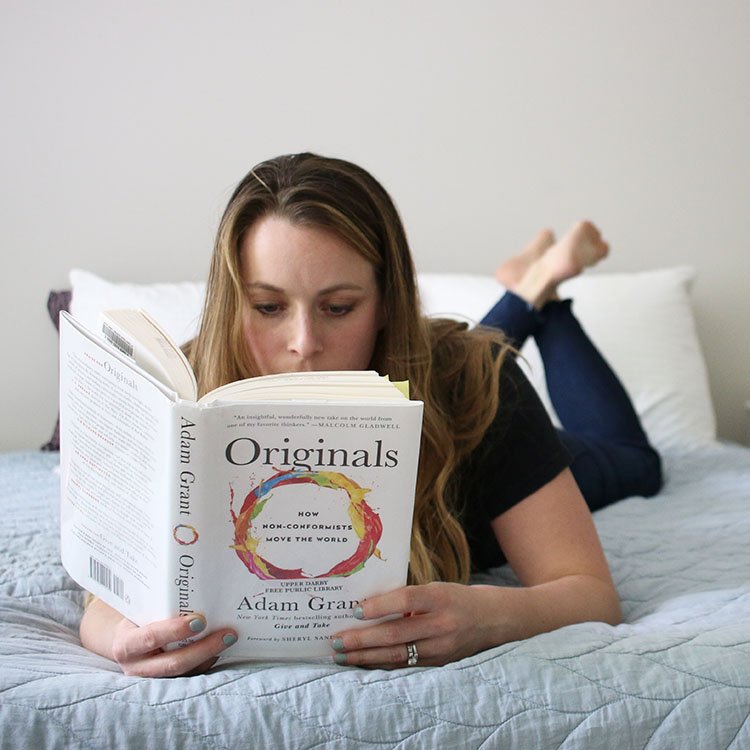Braiding Sweetgrass Book Review And Our Reciprocal Relationship With Nature
This is our second book in the monthly Honestly Good Eco Book Club for 2020. You can see the entire list of books for the year and also see the reviews for each book as I read them linked from the initial Honestly Good Eco Book Club post.
Have you ever stepped back to wonder why humans are at the “top” of the food chain? Are we really superior to everything else on this planet with no predators? Do we have some responsibility to oversee Earth or privilege to be in charge? What if, instead, we are part of the food web cycle and have a reciprocal relationship with nature?
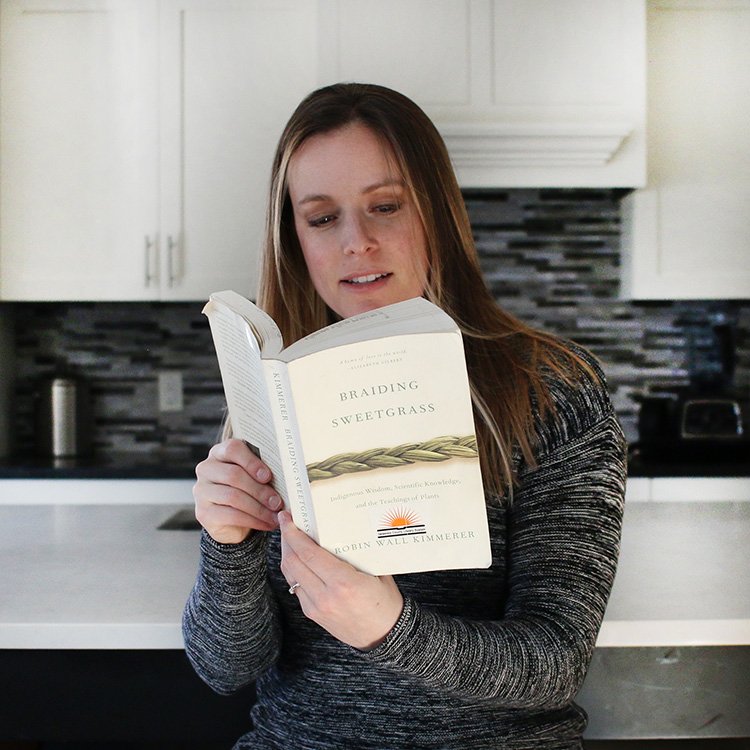
For thousands of years, Indigenous people have not considered themselves above, better than, or in charge of nature. They see themselves as a part of the larger world of land, plants, and animals. They are just one piece of the complex puzzle that comprises life on our planet. They hold themselves responsible for playing their part in the holistic cadence of the natural world and seek symbiotic relationships with everything on Earth.
In her book, Braiding Sweetgrass: Indigenous Wisdom, Scientific Knowledge, and the Teachings of Plants, author Robin Wall Kimmerer implores us to reflect on the relationship that Indigenous people have had with the land and all living things. A member of the Citizen Potawatomi Nation as well as a botanist and professor, she combines her scientific knowledge with the cultural wisdom she learned from her family about our relationship with nature.
Throughout the book, she highlights various memories and practices she experienced with her family that instilled in her a respect for nature and an understanding that she must develop a relationship with plants and animals that benefits humans as well as the Earth and the ecosystem.
“To be native to a place we must learn to speak its language”
We speak fluent languages between humans, but we often forget the languages spoken between wild animals, plants, and trees. Humans are by no means the only living things communicating with each other through language. For example, scientists are starting to understand how trees speak to and support each other. This Ted Talk on How Trees Talk To Each Other is fascinating.
Kimmerer reminds us that we won’t really know a place until we listen to the native language. We won’t really know a forest until we listen to the swaying of the trees, the trickling of waters of a stream, or the digging of a small chipmunk. When we really listen to the sounds and language of a place, we can begin to understand and respect all that it has to offer.
Currently, humans spend a lot of time talking and listening to each other. We would benefit greatly from watching and listening to the signs and messages nature sends us regularly. Kimmerer shared lots of ways her native culture listens to nature, asks for permission to use the fruits of nature, and watches the plants and animals for ways they communicate.
Our Reciprocal Relationship With Trees
Humans have reciprocal relationships with everything in nature though we don’t always collectively respect our symbiotic role. Trees are a perfect example of a really important relationship. Trees provide oxygen for us to breathe, fruit and nuts and sap for sustenance, shade to cool off in the summer, and wood to heat our homes in the winter.
In return, we provide carbon dioxide to trees. Admittedly trees seem to provide more to us than we to them, but we can support thriving trees by tending to their branches, caring for the soil around them, and even encircling them with daffodils (as Kimmerer did) to mark our gratitude with a touch of beauty. Is it all that different than humans gifting each other bouquets of flowers as a sign of love or gratitude?
Yet for all trees provide to us, humans recklessly cut them down, burn them, and disregard them without even the least bit of gratitude for all they do for us. We prioritize space for commercial farms and urban sprawl, while flippantly forgetting all the benefits we forego when we say goodbye to the trees.
Symbiotic Relationship With Soil
Soil is another example of a part of nature that serves humans so extensively. Soil is literally the ground beneath our feet. Soil feeds the plants and animals that we ultimately eat. Soil holds much of the carbon needed to sustain life that simultaneously destroys life when released into our atmosphere. Soil is the foundation for the most basic components of humanity.
Despite this, we show little appreciation for soil, highlighted by the fact that the quality of our soil has deteriorated precipitously in recent decades. Further, most of us know nearly nothing about soil and take it wildly for granted.
Soil provides for humans, and we can return the favor through habits like composting. Composting food scraps, yard waste, and nearly anything that has ever lived returns to the soil the nutrients we took from it. Just a bit of knowledge about composting quickly gives us a chance to give back to one of the foundational components of nature that brings life to the world.
In her book, Kimmerer strikes a balance of the “intertwining of science, spirit, and story” that blends her personal and professional experience interacting with nature. If we all thought of ourselves as part of nature, equally important as a tree, a bird, or the soil under our feet, we might find some really great solutions to climate change. We would likely welcome lifestyle changes that help us and Mother Nature thrive together.
Indigenous people spent thousands of years living in sync with nature. Their Nations thrived as did the ecosystems around their homes. Their cultural practices and wisdom have much to offer us today with respect to ways we can embrace a reciprocal relationship with nature.
They have taught us that we don’t just have to reduce our impact on Earth or do our best to be “invisible” to the planet. Instead, we can flip the script and increase our positive impact on the planet by letting the wisdom and words of Kimmerer’s book inspire us to follow the lead set by her Nation and so many other Indigenous Nations before us.

